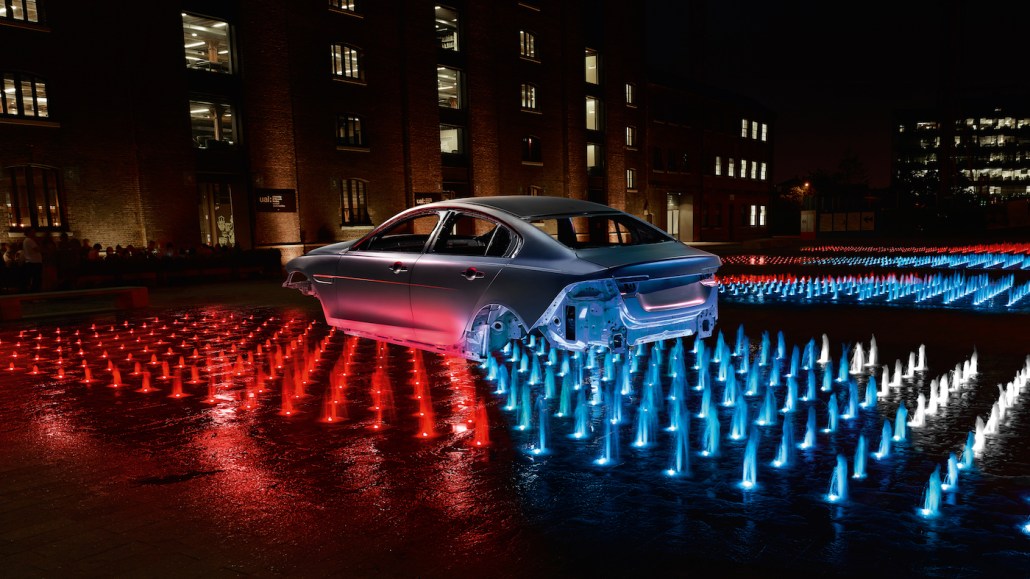Save 50% on a 3-month Digiday+ membership. Ends Dec 12.
‘Everyone is trying to make a margin’: Jaguar Land Rover on its search for honest ad partners

Jaguar Land Rover may spend hundreds of millions a year on ads, but it will be some time before the advertiser can take ownership of that money in the way Procter & Gamble, L’Oréal and Unilever can. That’s the view of Ian Armstrong, the brand’s global head of advertising, who believes Jaguar Land Rover isn’t as “sophisticated” with its budgets “compared to lots of other organizations.”
Armstrong, whose work with British advertiser trade body ISBA gives him a good read on how proficient his peers are with their money, is trying to change that — albeit by asking the basic questions first. These questions are leading Jaguar Land Rover to address the following issues: moving away from click-throughs and impressions as a standard, enforcing anti-fraud initiative ads.txt, coming up with a new agency model to retake control of its media budgets, building a deeper understanding of the context and impact of its ads, and establishing direct relationships with media owners and ad tech vendors closest to them.
“Some might argue that what we’re doing is basic, and it probably is to a degree, but we don’t have 200 people sitting in the analytics team going, ‘Have you realized this is all wrong?’” Armstrong said. “We’re trying to encourage a bunch of our markets to become more sophisticated, which will probably yield a bit of a surprise.” Armstrong added that he presides over some markets that just run display when “we know that shouldn’t be the place, either.”
Further details on how Jaguar Land Rover will get more transparency are hard to come by. However, the advertiser will eventually take more in-house as it spends more on the duopoly. The company is hiring more experts with data and programmatic expertise, which would lead to it managing the bulk of its relationships itself with the likes of YouTube and Facebook. That would leave Jaguar Land Rover’s media agency to manage the advertiser’s traditional offline channels. Armstrong would not comment on if such moves factored into its revamped $500 million (£360 million) media account, which has reportedly moved from Mindshare to Dentsu Aegis Network, but he did hint at changes.
“I think we will take the opportunity to cast a different lens [on our media] and look at how we set ourselves up for the next few years,” Armstrong said. “We’ll make some changes that support that part for us, which will include increased reliance and increased working practices on the analytics people.”
That analytics expertise can’t come soon enough at Jaguar Land Rover. Armstrong said he was “happy” with the ad tech vendors and measurement firms he already employs, but said explaining why to other parts of the business is a challenge. Having all those partners means the “value chain is now even longer because of all the required components, and therefore the perception could be drawn that the money is less effective,” he said.
“If all you’re doing is feeding the components in that chain, then that money is not necessarily going to a consumer, and so that then begins to influence the relationship between the marketing community and the finance community in the client organization,” Armstrong added. “So we’re putting all of the expected checks and balances in place as many others are doing.”
Part of the solution could also come from Jaguar Land Rover’s work with media-buying platform Iotec, which involves the advertiser alongside other industry leaders encouraging its peers to take action against dishonest ad tech vendors via a recently launched manifesto.
In the absence of internal expertise, Jaguar Land Rover has followed insights into transparent ad buying shared by P&G and relied on ISBA’s and trade body the Institute of Practitioners in Advertising’s work around effectiveness and agency remuneration. “Everyone is making a margin somewhere,” Armstrong said. “No one is in the [ad] business to lose money. But I don’t want it [the margin] to be unfair or unreasonable.”
Armstrong’s insights no doubt helped shape the second version of ISBA’s media services contract, a list of checks advertisers such as Sky, Barclays and the U.K. government have used to review agency deals. Released Feb. 28, the update is based on feedback from advertisers, the IPA and the big agency networks, which were not consulted for the first version of the contract.
“Put simply, if rebates and other sources of margin are going to get returned back to clients,” said Phil Smith, director general of ISBA, “then the fee structure needs to get back to a place where an agency is incentivized to help the advertiser grow its business.”
More in Media

Meta enters AI licensing fray, striking deals with People Inc., USA Today Co. and more
The platform has secured seven multi-year deals with publishers including CNN, Fox News, People Inc., USA Today Co to incorporate their content into its large language model (LLM) Llama.

European publishers say the Digital Omnibus ‘cookie fix’ leaves them worse off
The European Union’s attempt at a legislative spring clean for Europe’s web of data privacy rules, has landed flat with publishers.

Digiday+ Research Subscription Index 2025: Subscription strategies from Bloomberg, The New York Times, Vox and others
Digiday’s third annual Subscription Index examines and measures publishers’ subscription strategies to identify common approaches and key tactics among Bloomberg, The New York Times, Vox and others.





